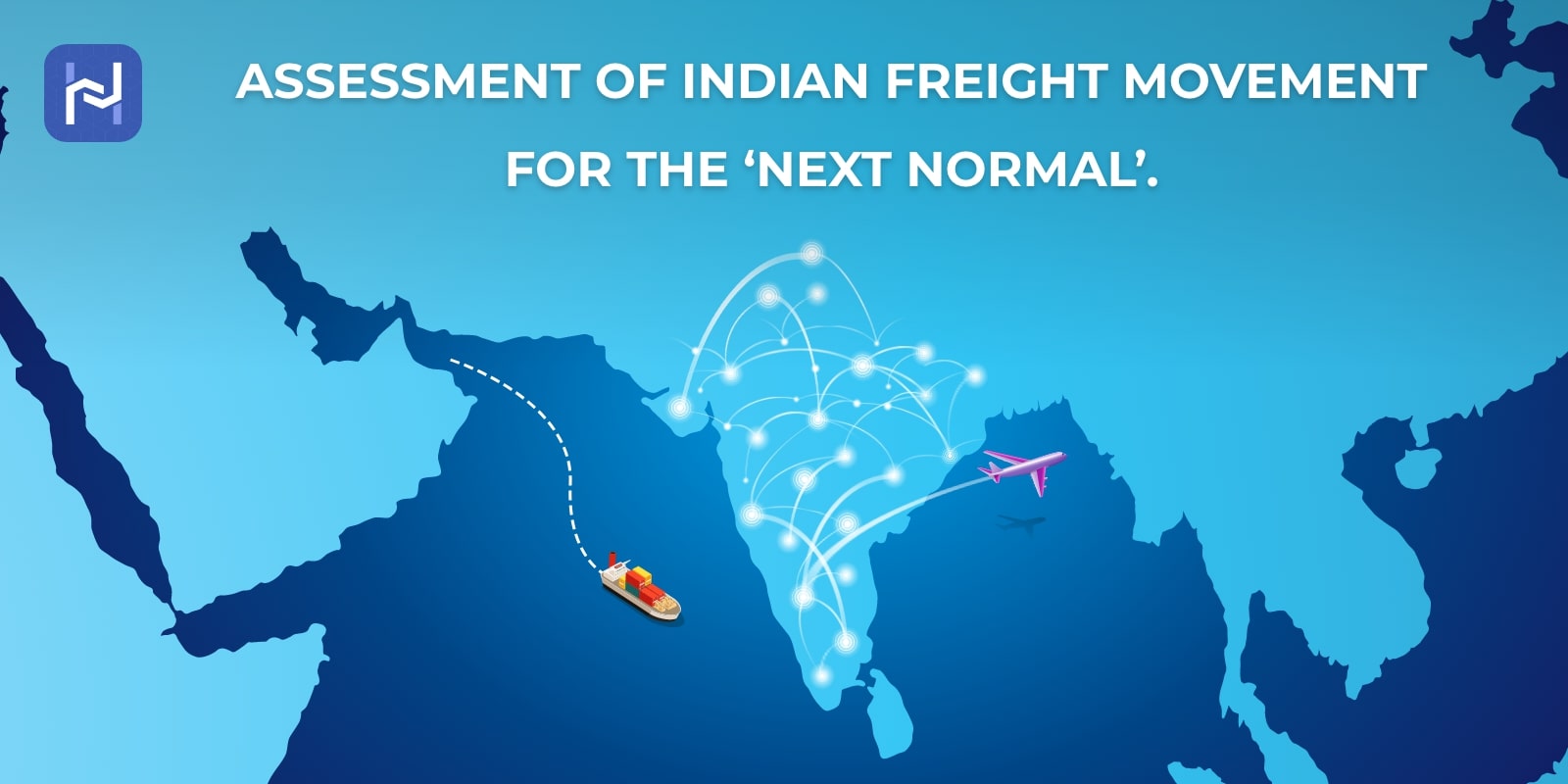Assessment of indian freight movement for the 'next normal'
08/02/2021
After the COVID-19 pandemic, it’s likely to see how it hit global trade longer than we have seen in other crises in the recent past. Its after-effects varied by commodity, trade lanes, and mode of transport. But the subtle nature of the crisis recreates opportunities for the logistics and supply chain industry; to enter a new market, create new service offerings, strong transportation position against other competitors. A detailed understanding of these effects will help companies to plan for better service resilience.
Global unconstrained trade volume dropped by as much as 21 percent in the second quarter of 2020. But in the third quarter merchandise import volumes grew fastest in North America (16.6% compared with the previous quarter) and Europe (15.0%), after having fallen sharply in the second quarter. In contrast to its stronger performance on the export side, Asia’s merchandise imports registered a modest 2.1% rise in the third quarter, suggesting a widening of trade surpluses in the region.
Meanwhile, India’s cumulative value of exports for the period April-February 2020-21 was USD 256.18 Billion as against USD 291.87 Billion during the period April-February 2019-20, registering a negative growth of (-) 12.23 percent in Dollar terms (negative growth of (-) 7.79 percent in Rupee terms).
The cumulative value of imports for the period April-February 2020-21 was USD 340.80 Billion as against USD 443.24 Billion during the period April-February 2019-20, registering a negative growth of (-) 23.11 percent in Dollar terms and negative growth of (-) 19.26 percent in Rupee terms.

he impact of the crisis will vary by different commodity. For instance, the commodities like cereals, rice, dairy products, drug, and pharmaceuticals have recorded positive growth during the last quarter of the year 2020-21. Domestic consumption and foreign export of these commodities are likely to grow faster in the coming months. Supply of these commodities will decrease only because of the production automation, supplier landscape, also increased demand for at-home food consumption. On the other hand, the trade volume of electronic goods, industrial machinery, petroleum products, and automotive and transportation equipment has recorded negative growth during February 2021. These commodities are expected to decline more because of a decrease in spending by consumers.


Covid-19 pandemic and lockdown affected the trade lanes and mode of transport for different commodity mix. Though containerized cargo such as agricultural and chemical are less affected. But for freight operators in dry bulk cargo and machinery movements, are likely to fall because of changes in demand in different geographies. It will likely affect larger revenue impact, higher operating cost, and higher number of empty rides will increase average fuel expense.
Data of each commodity and region, impacting per mode of transport and trade route, would be beneficial input to navigate a path after the crisis. For example, railroad, air and ocean transport companies, and freight agents will need to understand market demand against the trade route they are operating. In upcoming planning, industries should create commodity-based modeling for their import, export, and transport. Transport operators can create a model of top ten product origin and top commodities for trade imports and exports and, based on that scenario, they can design their service offering and operational planning. Based on this method, freight agents and large transport operators should assign their assets and talent to commodities or trade route which are less impacted or can recover speedily from the pandemic.
In response, Hypertech Logistics has developed capable logistics execution systems where these operators and industries based on their evaluated data and capital investment plans, could assess and optimize their transport service by different geography and transport mode. With evolved transport planning, integrated systems for internal and external operations, and digital process execution will make the reality of this scenario. This will help not only manufacturers and production companies but also transport operators to emerge with a competitive advantage in the next normal.
Get logistics & Transportation industry update and business insights
Suggested Products
-
HyperCollider - For Shippers & Companies
-
HyperProvider - For Logistics and Transport Operators
Tags
Recent Posts
-
Journey From MakeMyTrans to Hypertech Logistics
-
For Shippers and Production Companies – What to Expect From Transportation Market?
-
Assessment of indian freight movement for the ‘next normal’
